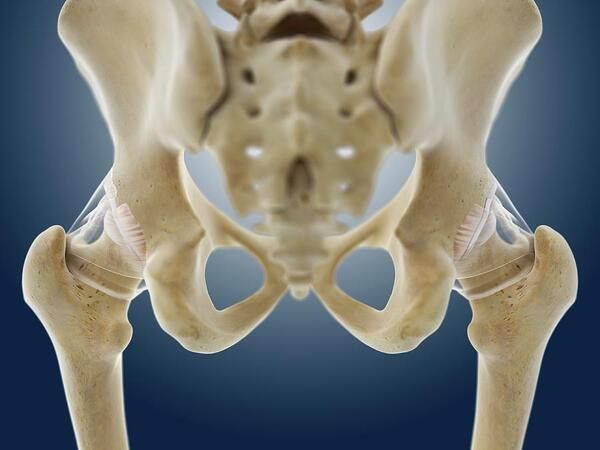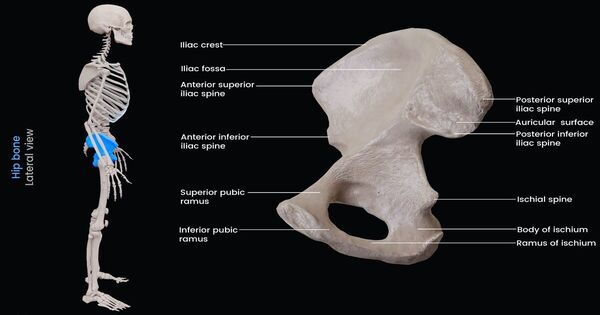A new reconstruction of the 375-million-year-old fossil fish Tiktaalik, a close relative of limbed vertebrates, utilizes micro-CT to uncover bones that remained trapped in matrix. The model reveals that the fish’s ribs were most likely linked to its pelvis, an innovation thought to be critical for body support and the evolution of walking.
Before the evolution of legs from fins, the axial skeleton, which included the bones of the head, neck, back, and ribs, was already changing in ways that would eventually allow our ancestors to support their bodies while walking on land. A Penn State biologist led a team of researchers who created a new reconstruction of Tiktaalik’s skeleton, a 375-million-year-old fossil fish that is one of the closest ancestors to limbed vertebrates. The new model reveals that the fish’s ribs were most likely linked to its pelvis, an innovation thought to be critical for body support and the evolution of walking.
A paper describing the new reconstruction, which used microcomputed tomography (micro-CT) to scan the fossil and reveal vertebrae and ribs of the fish that were previously hidden beneath rock, appeared in the journal Proceedings of the National Academy of Sciences.
Tiktaalik is remarkable because it gives us glimpses into this major evolutionary transition. Across its whole skeleton, we see a combination of traits that are typical of fish and life in water as well as traits that are seen in land-dwelling animals.
Tom Stewart
“Tiktaalik was discovered in 2004, but key parts of its skeleton were unknown,” said Tom Stewart, assistant professor of biology in the Eberly College of Science at Penn State and one of the leaders of the research team. “These new high-resolution micro-CT scans show us the vertebrae and ribs of Tiktaalik and allow us to make a full reconstruction of its skeleton, which is vital to understanding how it moved through the world.”
Unlike most fish, which have vertebrae and ribs that are the same along the length of the trunk, the axial skeletons of limbed vertebrates show dramatic differences in the vertebrae and ribs from the head region to the tail region. The evolution of this regionalization allowed the performance of specialized functions, one of which was a mechanical linkage between ribs in the sacral region to the pelvis that enabled support of the body by the hind limbs.
The pelvic fins of fish are evolutionarily related to hind limbs in tetrapods — four-limbed vertebrates, including humans. In fish, the pelvic fins and bones of the pelvic girdle are relatively small and float freely in the body. For the evolution of walking, the researchers explained, the hind limbs and pelvis became much larger and formed a connection to the vertebral column as a way of bracing the forces related to supporting the body.
“Tiktaalik is remarkable because it gives us glimpses into this major evolutionary transition,” Stewart said. “Across its whole skeleton, we see a combination of traits that are typical of fish and life in water as well as traits that are seen in land-dwelling animals.”

Tiktaalik’s original description concentrated on the skeleton’s front. Fossils were methodically processed to reveal the skull, shoulder girdle, and pectoral fins beneath the rock matrix. The ribs in this area were large and enlarged, implying that they may have provided some support to the body, but it was unclear how they would have done so. In 2014, the fish’s pelvis, located in the same site as the rest of the skeleton, was cleaned of matrix and described.
“From past studies, we knew that the pelvis was large, and we had a sense that the hind fins were large too, but until now couldn’t say if or how the pelvis interacted with the axial skeleton,” Stewart stated. “This reconstruction shows, for the first-time, how it all fit together and gives us clues about how walking might have first evolved.”
The researchers explained that, unlike our own hips where our bones fit tightly together, the connection between the pelvis and axial skeleton of Tiktaalik was likely a soft-tissue connection made of ligaments.
“Tiktaalik had specialized ribs that would have connected to the pelvis by a ligament,” Stewart stated. “It’s truly remarkable. This species possesses numerous characteristics that contributed to the evolution of walking, including large hind appendages, a huge pelvis, and a connection between the pelvis and the axial skeleton. While Tiktaalik was probably not walking across land, it was certainly trying something new. “This was a fish that could probably prop itself up and push with its hind fin.”
The new skeleton reconstruction reveals adaptations for head mobility in Tiktaalik, as well as fresh insights about the fish’s pelvic fin architecture.
“It’s incredible to see the skeleton of Tiktaalik captured in such vivid detail,” said Neil Shubin, Robert R. Bensley Distinguished Service Professor of Organismal Biology and Anatomy at the University of Chicago and one of the authors of the paper. “This study sets the stage for ones that explore how the animal moved about and interacted with its environment 375 million years ago.”
















